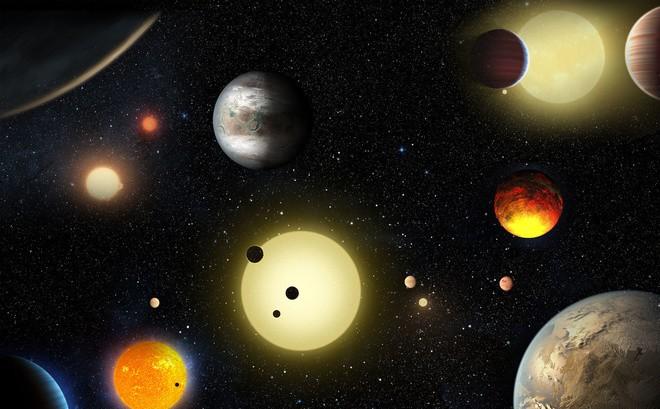Exoplanets are currently a hot area of astrophysical research, and because exoplanets and extraterrestrial life are closely related, they have attracted many researchers to invest in them. Half of the 2019 Nobel Prize in Physics was awarded to two scientists from Switzerland for the first discovery of a planet orbiting a Sun-like star outside the solar system.

So far, humans have found 4,104 exoplanets of various shapes, and the discovery of these strange new worlds has refreshed our understanding one by one, prompting researchers to constantly revise the theory of the origin of planets. Recently, astronomers have discovered 3 strange exoplanets, which are fluffy and soft like 3 huge marshmallows!
Located about 2,400 light-years from Earth, the kepler 51 star system was first discovered by the Kepler mission in 2012, but it wasn't until 2014 that scientists discovered that the star system contained several extremely low-density planets. Based on the latest observations from the Hubble Space Telescope, researchers finally have a deeper understanding of their chemical properties.
One of the study co-authors, Libby-Roberts, an astrophysics graduate student at the University of Colorado Boulder, said that kepler 51 has 3 planets that are very strange, their size is comparable to Jupiter, but the mass is only 1/100 of Jupiter, and the density per cubic centimeter is less than 0.1 grams, which is equivalent to a foam box for fruits, or a marshmallow that children love to eat, which is very different from the rocky or gaseous planets of the solar system.
The researchers speculate that lightweight gases such as hydrogen and helium are the main cause of the planet's fluffiness, in addition to containing a significant proportion of methane, causing the entire planet to be covered in opaque methane mist, similar to Titan with a thick atmosphere. Since methane tastes like rotten eggs, these planets, while seemingly marshmallow, don't actually taste good.
Kepler-51 is a young (only 500 million years) star system whose planets are still in the process of orbiting inward. Using models of planetary evolution, the researchers found that as planets get closer to the stars, they will quickly emit gas, losing billions of tons of mass per second, and billions of years later, these "marshmallow" planets will shrink considerably to become common exoplanets like Thermoptune.
Welcome to leave a message to discuss!